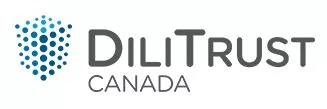A Board of Directors can be like a ship at sea. You know where you want to go, and you are steering the ship with recommendations from the executive leadership team and other company experts. As captains of your company, you see the bigger picture, and it's your job to help guide your entire organization there.
Transparency between the Board of Directors and the executive leadership team, stakeholders, managers, employees, and customers improves a Board's decision-making skills. This way, everyone is aware of the impact their plans will have and any risks they do take will be better calculated ones.
When considering why your board should be transparent, here are 3 specific reasons why:
- When you focus on the bigger picture, you may forget about assessing which steps it is comprised of
Changes your board makes can sometimes uncover how unprepared your company might have been. Putting certain steps in place can reduce the risk if this happening.
For example, when making a digital transformation, your company culture may not support it. You may have leaders or a large cohort of employees that are resistant to change. Employees may need more training to ensure they're able to properly use the technology. New employees with specific skills may need to be hired.
Furthermore, if your workforce isn't fully utilizing the technology investments you've already made, you may face similar issues once a new technology is adopted. A digital transformation will ultimately fail if, for example, training isn't done to make sure current employees are up to speed.
A Board of Directors can make the absolute best decisions possible if it is made aware of these kinds of specifics.
- Transparency can work both ways
The most valuable aspect of transparency is that when your board of directors is transparent, it encourages everyone else also to be so as well.
Your executives and managers are the ones hoisting the sails. They're on the frontlines, and you can work together to push against outdated thinking or any other resistance that they are aware of.
For whatever change your board of directors implements, your executives and managers need to be aware of its level of urgency because they are the ones to regularly communicate it to the rest of the workforce.
Your board may also be unaware of how customers may react to specific changes. Sharing data points and other important information so that customers can view it can also help them understand your organization's choices and improve how the public views it.
- Transparency can improve buy-in
When your executives, managers, employees, stakeholders, and customers feel that they have a say, they're more likely to buy in.
You can encourage this by having specific board meetings that can be attended by anyone. You could give them titles such as "Strategy Day." These could be opportunities for executives, managers, and/or employees to weigh in on decisions and strategy. These create opportunities for the board to discover internal knowledge they may not have been aware of.
That collaboration will also ensure that everyone feels heard, whether or not your board makes a change based on the knowledge acquired. People need to be heard, and that will always encourage greater buy-in from any of your constituents.
Transparency, especially when practiced with customers, tends to create improved public perceptions of an organization. It shows that they care and that they value the opinions of their customers and that their decisions are guided by this information.
As your board moves forward with a significant change, take steps to be transparent by regularly communicating with stakeholders, employees, and customers. They will be most affected by any outcomes, so they should be informed and consulted. Regular communication is critical, both with regards to how certain things, such as the market, competitors, innovations, etc. are affecting your industry, and as to how your company will respond to these.
Scheduled, regular conversations are best. However, your board may also want to consider using technology—video chats, social media, or some other way—so as to have high attendance rates.
While it may seem best–and definitely less time-consuming–to make decisions from your boardroom, as though you're the captains of this ship, the benefits of being transparent far outweigh the cons. Yes, it may take longer for your board to create action plans and institute changes, but your action plans and changes will yield better outcomes because you'll be more aware of the dynamics of any decision you're making and, as direct result, you will experience increased buy-in from all impacted.
The content of this article is intended to provide a general guide to the subject matter. Specialist advice should be sought about your specific circumstances.

